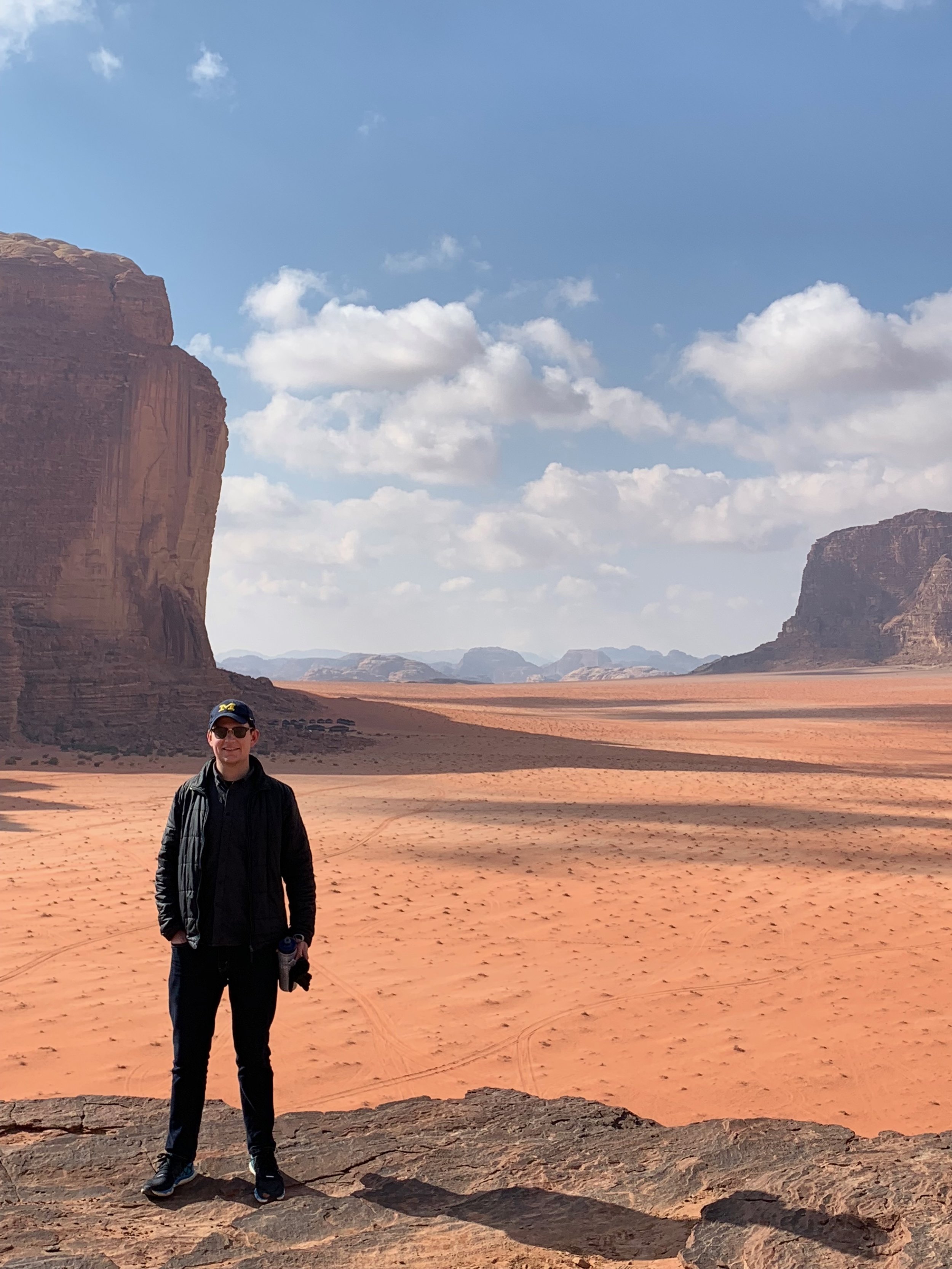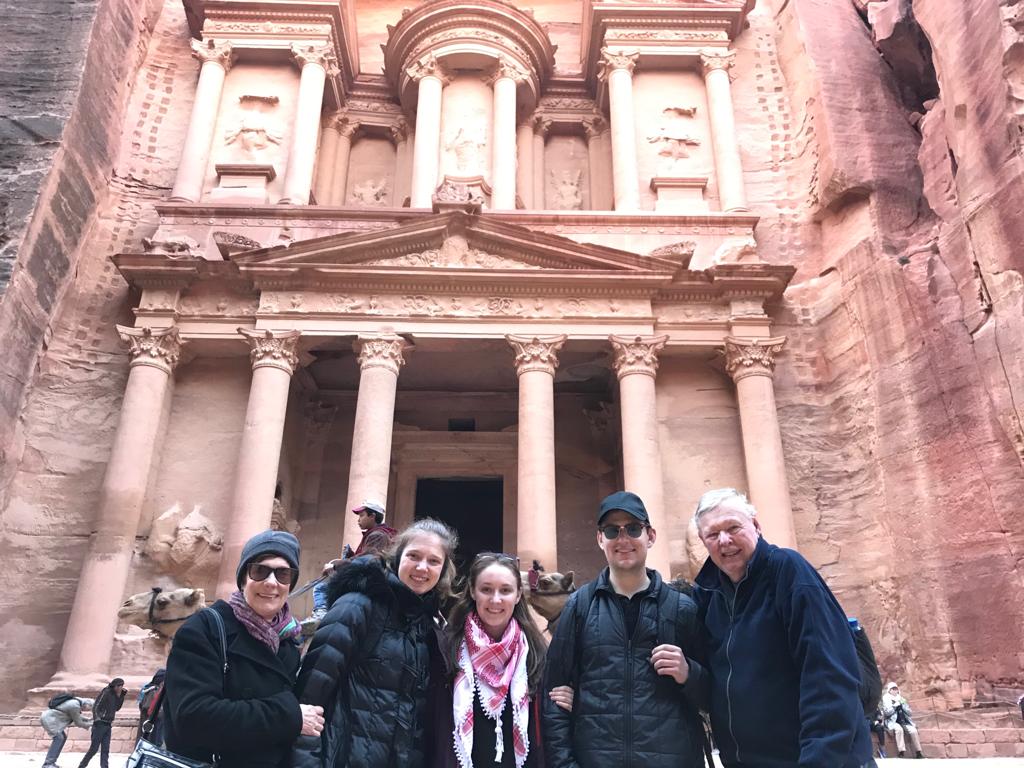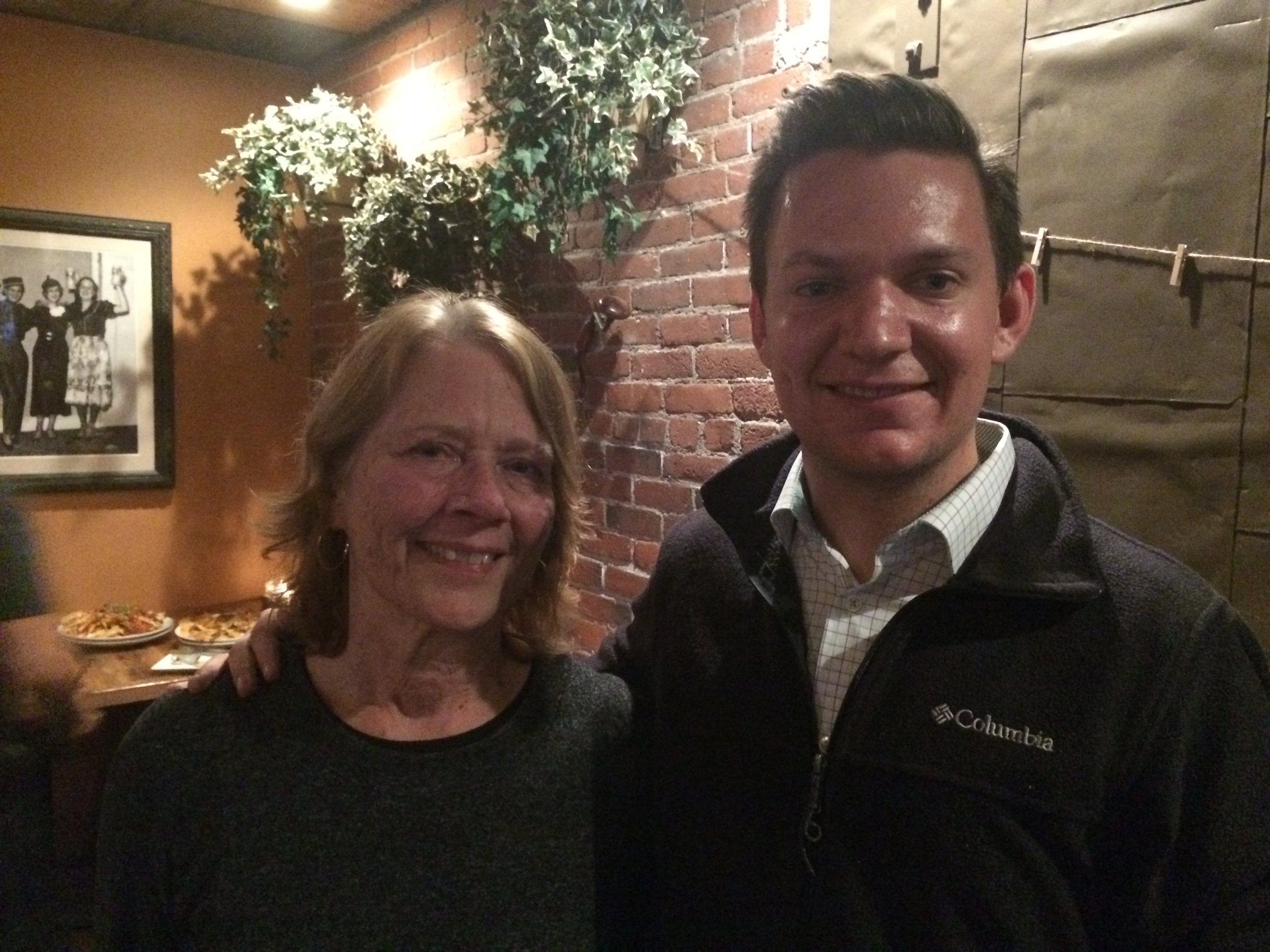“I was drawn to FableVision because of its emphasis on mission-based projects” says Michael Fogarasi, FableVision Producer. “This coupled with working with creative and technical teams here at the studio brings a uniqueness to what might otherwise be a traditional project management role.” As producer, Michael manages not only his own schedule, but those of his team members. He also keeps track of task lists, reviews, and other items to ensure the projects he produces are running efficiently and delivering high quality content.
Michael is also no stranger to stepping up when it comes to a new project. As evidenced by his transition from Associate Producer to Producer and his role as Production Internship Coordinator, Michael not only understands the production process, but is also passionate about guiding and mentoring FableVision interns so that they can understand and become familiar with it.
Although every project is different, Michael welcomes every unique challenge and works hard to keep the team on track to deliver a project that meets both the client’s mission and the studio’s goals. And since we work with like-minded organizations to move the world to a better place, his managing of our teams is seen and felt by staff and partners alike. Let’s jump in and learn more about his process for approaching new projects, what he looks for in a production intern, and where he’s headed on his next vacation!
How did you come to be at FableVision?
I started college around the time when educational technology websites and apps like Quizlet and Duolingo were first coming out. Once I tried them, I was immediately hooked—they not only became an integral part of my learning experience, but also sparked a passion for educational technology. Pursuing this passion, I ended up as an intern in MIT’s video production department, where I helped film and edit courses for MIT OpenCourseWare. Then, a good friend of mine and former FableVision associate producer Katie Tusch, let me know the team was hiring for the associate producer position, and I jumped at the chance.
You have to balance a lot of schedules when producing projects. What does a day in your life look like? And how do you keep your team(s) on track?
My day starts and ends with a variety of productivity tools and schedules. Every morning, I’ll check in on FableVision’s weekly schedule and my own schedules for each of my respective projects. I’ll then make sure that each person on my team knows what they have ahead of them that day—sometimes that’s through project stand-ups, Slack check-ins, or I’ll just head over to their desk.
For projects that are earlier in the process, we tend to meet fairly frequently, so I’ll gather the team for brainstorming sessions or production meetings to start the problem-solving process. I’ll also frequently meet with clients to present what we’ve been working on, making sure that we capture their feedback.
All of this information ends up getting organized on my personal Trello board. Anything that comes my way gets immediately noted and categorized—I rely upon it heavily! I probably run through my to-do list 10-20 times a day to determine the next steps that need to be taken. Then, I’ll do one final swoop at the end of the day to ensure we’ve hit all of our deliverables, while also previewing the next day—just to make sure there are no surprises!
What is your process for approaching a new project, and what advice do you have for new producers starting their first project?
The beginning of a project is an exciting time—it can go a million different ways and it’s the producer’s job to help find its footing. Beyond setting up all the organizational infrastructure, my advice would be to become intimately familiar with the client’s goals and wishes for the project. I like using the project kickoff to explore the client’s background and reasons for coming to FableVision. Those early conversations can set the tone for the entire project—if you’re able to keep these discussions in mind, you can make sure that every decision is made in the project’s best interest.
What’s the biggest difference in producing animation and game projects?
Animation and games are quite different in the way they are experienced—animation conveys its information to curious viewers, while games need to get their message across through a series of interactions.
In animation projects, I like to think of the storyboard as the end-product of the ‘plan’ phase. Once the script has been written and the storyboard drawn—both major feats on their own—our team has a pretty good sense of whether the piece is engaging or conveys the intended message. If we’re happy with the piece at this stage, we can be very confident that we’ll similarly be happy with the final piece—and so it just becomes a matter of executing on the storyboard, which requires tracking all the assets to be created, scenes to be animated, and audio to be recorded.
Meanwhile, an interactive project’s ‘plan’ is typically a game design document, which describes all the interactions a user may encounter throughout the experience. Ultimately, the design process requires careful testing and tweaking of the document’s mechanics over the course of the development cycle to ensure that we create something fun that simultaneously gets the content across. Because of that, our team needs to act much more quickly—constantly meeting, reviewing game builds, and discussing potential improvements—while also figuring out which assets need to be tracked and created. It’s a process that keeps you on your toes!
You’ve produced some pretty large projects during your time here. Can you tell us a little more about one in very recent memory, Project Here Games? What went into getting that project to the finish line?
Project Here Games was a really fun and challenging project to work on. The project was commissioned by the Massachusetts Attorney General’s Office (AGO) as part of their Massachusetts-state-wide Project Here initiative to combat substance use through social emotional learning and healthy decision making. As you can imagine, that’s a pretty hefty task to fit into an engaging website for middle schoolers—but none too big for the project’s creative masterminds, Leigh Hallisey (creative director/writer) and Loren Lee-Flynn (user experience designer). Our team devised a series of quizzes and games, which were designed to model real-world situations and reward healthy decision-making. Combined with a really fun art style from our art team, Keith Zulawnik and Christina Kelly, the website was an instant hit. And collaborating with associate producer, Mikaela Johnson, and really dedicated teams at the AGO, Human Resources in Action, and GE, allowed us to wrap up the project smoothly and successfully.
You also project managed The Paper Girls Show! What’s your favorite thing about that animated series?
The series Paper Girls Show depicts two friends, Caily and Reese, who are both totally enamored with STEM and use it to solve all sorts of creative challenges. The show aims to break down gender stereotypes around STEM subjects and empower more girls to join those fields. It was inspiring to work with a team of people who were passionate about the mission. This created a fast-paced, creative environment that was amazing to be a part of—we could barely keep up with all the backgrounds, characters, and designs our art team was producing. And at the end of our first season, it was exciting to receive validation for our hard work once we took home animation awards at Cannes, Palm Springs, and KidsScreen!
You’re also the coordinator for the studio production internship. How do you work with the interns to insure they’re getting the most out of their time here, and what do you look for in a production intern?
At the beginning of a student’s internship, we meet to determine what sorts of projects they are interested in and subsequently pair them with a few. While assigned to a project, the interns become part of the team, helping out in a variety of capacities. When I was an intern at various companies, I didn’t always get a sense of the company’s bigger picture beyond the project I was assigned to, so I also started a series of weekly meetings with our interns, in which studio members discuss their roles and backgrounds. Through these meetings, the interns are able to see how all the different pieces of the FableVision puzzle fit together.
Regarding prospective candidates, I’m most interested in whether they have demonstrated a real interest in either children’s media or educational technology. We’re looking for students who are really passionate about the field and made efforts to contribute to or learn about it.
What are your favorite ways to unwind after work?
I really enjoy running, biking, or cooking when I get home in the evenings. I don’t have a car in MA, so I’ve been able to get out and explore the area by biking deep into the suburbs and countryside. I also love trying out and perfecting new recipes, particularly with unique ingredients or new flavors I haven’t experienced before.
You’ve lived in and travelled to a lot of countries. How have your travels influenced you, and what’s your next vacation destination?
I was lucky enough to grow up in a foreign service family, which meant moving to a new country every three to four years. It’s hard not to love travel with that kind of background. So since I moved back to the US about 10 years ago, I’ve been trying to get out as much as possible. I love seeing unique places (especially city skylines), trying new foods, and—though I’m a bit of an introvert—meeting new people.
In terms of next destinations, one of my good friends is moving to Argentina for a few months and I’m hoping to get down there in the fall. It will be my first South American destination, but I’m hoping to travel throughout the continent at some point.
More about Michael:
Current show you’re binge-watching: Anything from Bon Appetit’s YouTube channel.
Favorite game: Mario Kart Double Dash.
Any podcast recs? It’s not the cheeriest rec, but I’ve been listening to Slate’s Slow Burn about Bill Clinton’s impeachment. I’ve been trying to revisit political events from my childhood and this fits in perfectly.
Go-to dish to bring to a potluck: Homemade hummus or a dip with too much garlic.
Favorite book you’ve read recently: Bad Blood: Secrets and Lies in a Silicon Valley Startup by John Carreyrou.















